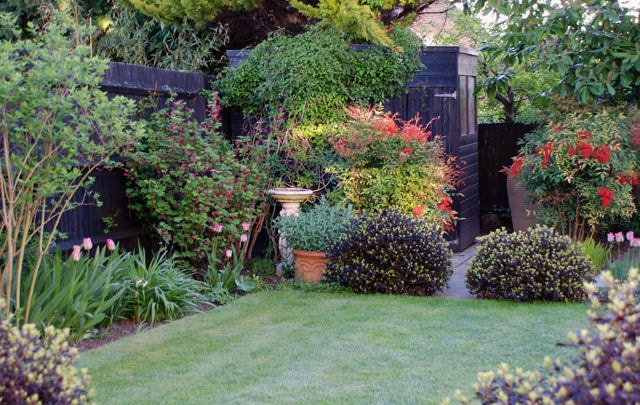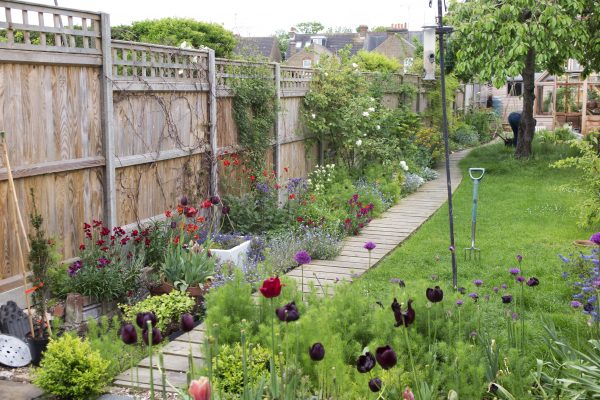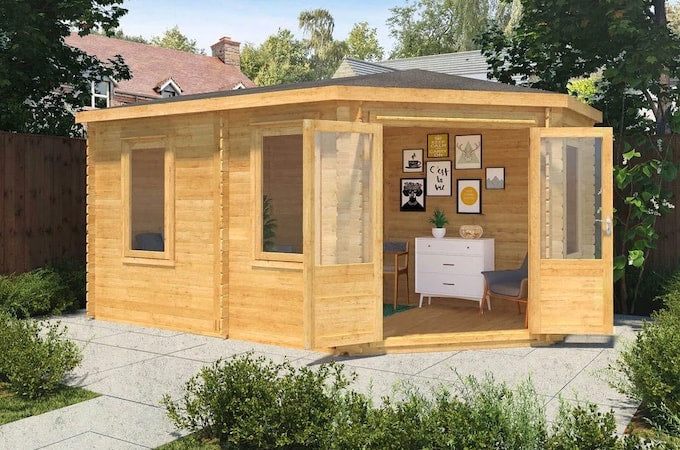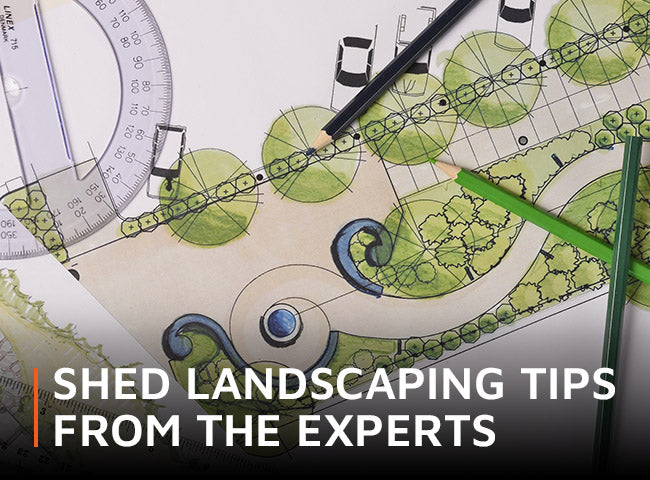It’s a place to store tools. Or perhaps you’ve turned your shed or garden room into additional living space. Maybe it’s a greenhouse where you tend young plants. But be honest, does your shed look like it simply dropped from the sky and landed randomly in your garden?
With a few clever landscaping tips you can transform your outbuilding into an interesting focal point in its own right. We’ve asked some of our favourite landscape gardeners and creative shed owners for their advice.
Plan in advance

Image source: Customer Story - Amy's Insulated Garden Room
If possible, make a plan for your garden that includes a shed or garden building right from the beginning. Even if you can’t afford to erect the building straight away, making it part of the design will give you a better end result.
If you’re adding a shed to an existing garden, ask yourself if the location makes sense. Does it need to be close to flower beds, vegetable plots and a water supply? If it’s going to be a home office, how far will the electrics need to run? Choose the location carefully and you could save lots of money on amenities. For a hassle-free delivery and installation, visit our Installation Service page.
Sally, of Sally’s Garden Blog has a lean-to greenhouse where she spends hours growing vast amounts of flowers, tomatoes and cucumbers. It’s so comfortable that she even holds ‘greenhouse parties’ in there! Not only is her greenhouse a welcoming space, she’s thought about its ‘kerb appeal’ too:
I put some battery powered fairy lights along the rope ladders... they look gorgeous on an evening as they light the greenhouse up.
If, like Sally, you don’t need a hard-wired electricity supply, lighting your shed or greenhouse with solar lights creates a magical ambiance as the sun goes down.
Make it a focal feature

Image source: Customer story: Anna's greenhouse
Lisa of Lisa Cox Designs has some sound layout advice: “Deciding where to locate the shed will depend on whether or not you want to make a feature of it or not” . She goes on to talk about the more aesthetic aspects:
If it’s pretty and you want to see it then why not enhance the overall appearance with a lick of paint and some accessories.
Painting your shed in a bold colour to make it really stand out can be very effective. An unexpected pop of red, orange or turquoise will transform a humble utility building into a striking statement.
And if you want to give it personality, it’s the tiny details that count. An interesting name plate, a weather vane, window boxes, contrasting shutters, a quirky door knocker or a grand entrance with symmetrical planters either side will add to the charm.
Carefully conceal it

Image source: Lisa Cox Designs
Alternatively, you may prefer to screen your shed from sight so that it recedes gracefully into the background. If that’s the case, Lisa Cox suggests painting it black:
Black will literally make it disappear and has the added bonus that the plants will come to the fore and really be visible.
Creating a screen of plants is the most natural way to conceal a garden building.
Jason of Hornby Garden Designs suggests planting “evergreen hedges, such as Yew or Cherry Laurel [to] hide the shed if required.” Can’t wait for a hedge to grow? Erect a decorative fence panel or trellis, or try some handsome willow hurdles that can be gently curved to create an interesting structural feature.
To maintain your shed or garden room, Waltons doesn’t recommend growing plants on the building itself. But you can paint it green (or the same colour as your fence) and arrange pots and vertical planters in front to soften the impact.
A sense of unity

Image source: The Middle Sized Garden
To make your shed feel like an integral part of your garden’s design, mirror details from your house. Repeat colours, materials and styles. If your home has slate or terracotta tiles, fit them to the roof of your shed. If your house has Georgian windows, buy a pack of Waltons Georgian-style window bars for your shed.
And if your house has a patio, Jason, of Hornby Garden Designs suggests adding one to your shed as well. He recommends that you add “a patio to the front, surround [it] with lavender and possibly build some raised beds on either side to plant up with seasonal colour.”
Alexandra of The Middle Sized Garden agrees that a sense of unity is the trick to making a separate greenhouse and shed work in a long, thin garden:
In a narrow garden, it would look bitty to have too many colours in the path, fence and sheds.
According to Alexandra, you should make full use of different materials but tie them all together with a similar tone and colour.
Practicalities

Image: Waltons The Hemlock 5m x 3m Log Cabin
Access to your shed is possibly the most important of all the practical considerations. A path creates an important visual connection to your home. Will you choose a straight, modern approach or opt for something that curves and meanders to unexpectedly reveal the garden building from its best angle? Choose your path carefully and your shed won’t look like a UFO that fell unexpectedly from the sky.
The appearance of your shed, greenhouse or garden room is important, but not at the expense of functionality. The team at Fantastic Handyman reminds us that location and access are equally vital:
It’s not just the area of a shed, it’s how the doors open and where it is in relation to other essentials like the garden, fence, woodpile, etc.
Scott from Kitchen Garden agrees. But, he says, don’t forget that there are lean-to designs or clever combi-structures that make the most of your space in a streamlined way:“If you...don’t have enough room in the garden for a greenhouse and a shed, why not look at one that combines a well-lit potting area with a generously sized storage section?"
No matter what you use it for, landscaping the area around your shed will make a huge difference to your garden. Whether it’s a secret getaway, a private place to work or the nerve-centre of your plot where plants and vegetables are born, make your shed an integral part of your garden rather than a random afterthought.




